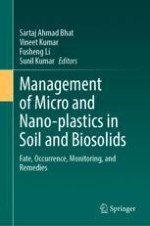2024 | OriginalPaper | Buchkapitel
Microbial Nanobioremediation of Micro-Nanoplastics: Current Strategies, Challenges, and Future Prospects
verfasst von : Jyothirmayee Kola Pratap, Kannabiran Krishnan
Erschienen in: Management of Micro and Nano-plastics in Soil and Biosolids
Verlag: Springer Nature Switzerland
Aktivieren Sie unsere intelligente Suche, um passende Fachinhalte oder Patente zu finden.
Wählen Sie Textabschnitte aus um mit Künstlicher Intelligenz passenden Patente zu finden. powered by
Markieren Sie Textabschnitte, um KI-gestützt weitere passende Inhalte zu finden. powered by
